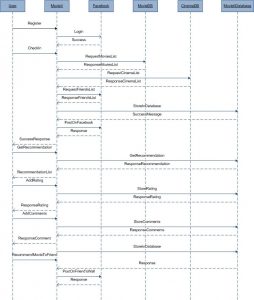MovieIt and Economic Aspects
By increase in the amount of movies offered through the web, people require a mean to find and evaluate these many alternatives. Recommender systems are a solution to this problem. Actually, recommendation systems are emerging as an important business application with significant economic impact. Movie recommendation systems such as Netflix or our proposed system (MovieIt) recommend movies to users. In fact, recommender systems help consumers, to find out about new products, and this increases sales diversity. Providing these kinds of systems is an incentive for movie companies, because it can help them increase profits. Read the rest of this entry »
MovieIt and Social Aspects
 All the people rely on recommendations from other people. These recommendations can be either by reviews of movies and books that are printed in newspapers and magazines, recommendation letters, or general surveys. This is called a social process that can be assisted and augmented by recommender systems. Recommender systems that have become increasingly popular are a way for people to make their decisions. These decisions are based on other individuals’ recommendations and choices can be made without sufficient knowledge or experience of alternatives. Typically recommendations are considered as inputs of recommender systems. Read the rest of this entry »
All the people rely on recommendations from other people. These recommendations can be either by reviews of movies and books that are printed in newspapers and magazines, recommendation letters, or general surveys. This is called a social process that can be assisted and augmented by recommender systems. Recommender systems that have become increasingly popular are a way for people to make their decisions. These decisions are based on other individuals’ recommendations and choices can be made without sufficient knowledge or experience of alternatives. Typically recommendations are considered as inputs of recommender systems. Read the rest of this entry »
“MovieIT” demo scenarios
 Last few months our team was working on demo version of proposed social network-based recommendation system. We decided to include in the minimal functionality set following features: movie and place check in, movies rating, suggestions to friends, “following” friends with similar tastes functionality and recommendation engine. This post describes available use case scenarios and provides interface screen shots of our demo application.
Last few months our team was working on demo version of proposed social network-based recommendation system. We decided to include in the minimal functionality set following features: movie and place check in, movies rating, suggestions to friends, “following” friends with similar tastes functionality and recommendation engine. This post describes available use case scenarios and provides interface screen shots of our demo application.Roger’s adoption curve
Rogers adoption curve defines the criteria for accessing the adoptability of new products. In this post I’ve examined these criteria against features of MovieIt application.
Compatibility:
MovieIt allows users to user their Social network accounts for using this application. Their friends on these networks will be automatically imported. This results in higher compatibility of the product with existing social networks.
Complexity:
MovieIt has been designed with mobile applications in mind. Therefore, the interface has been designed to be very simple and usable. This simplicity allos new users to instantly understand the interface.
Trialability:
Users can easily login and start using the applications within seconds. Furthermore, users can use the system without any further commitment, which results in higher trialability.
Observability:
MovieIt uses social network notifications to increase its observability. When someone checkinin a movie, notifications of it will appear on his/her users newsfeeds. Furthermore, users can post information about their movies on their walls.
Relative advantage:
Advantages of MovieIt application against other existing products are discussed in details in this post.
Technologies Used
Our implementation is separated in three main three tiers. For the Data tier we used the Mysql Database. Some of the information that is stored into the database is all the Social network (Facebook, Twitter) credentials (OAuth 2.0 access token, OAuth v1.oa oauth_consumer_secret and oauth_token_secret), Movies watched, Moves recommended to friends and place where the movie watched. This information can be exploited in order to provide advanced recommendations. Read the rest of this entry »
Updated Usecase
In the past couple of months, we have discussed the application and its features in depth during our group meetings. These discussions have lead to some changes in our application. The following diagram is the updated version of our use case diagram.
MovieIt interaction sequence
This posts is going to answer the question of “How does it all work?”
We have visualised the sequence of interactions between the clients, server, database and facebook using UML sequence diagram. The following screenshot shows the interactions whithin MovieIt application.



